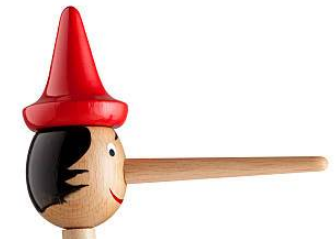The rules news media follow in order to lie to you
There's a rulebook that media follow to trick and manipulate you. Don't get caught falling for their tricks.

This is an excerpt from the article How to Bounded Distrust by Zwi Mowshowitz. Effective strategies to disassemble the systematic deceit of news media are included there. An archive is supplied with this post in case the article disappears.
What are the Rules?
Some special rules about the headline. They also apply to op-eds. Headlines are:
Not chosen by the author.
Allowed to lie.
Allowed to blatantly contradict the article’s content.
Laying out a Narrative the source wants you to believe.
The body of a news article is more reliable. The rules are simple. The article:
Has a Narrative, likely revealed by the headline.
Is not allowed to lie, in a way that could count as being physically falsified.
Is not allowed to assert facts without reliable sources.
Is allowed to do almost anything else.
Is often part of an implicit conspiracy to suppress true information or spread false information, without explicit denial of the true info or explicit claims of the false info.
Is allowed to repeat any claim if it attributes that claim to its source.
Can call anyone an expert. Expert consensus means three people. ‘Some investors’ and similar phrases mean two (as does ‘surrounded by.’)
Is allowed to withhold or not seek relevant information, selectively quote, frame, insinuate, imply, condemn via association, misconstrue. This includes calling true things lies or ‘misinformation’ if they imply disliked things.
Is allowed to change meanings of words in different contexts or over time.
Will draw conclusions in ways that defy logic, or that would be obvious errors to anyone with ordinary skill in the art. This is allowed.
Can and will find an ‘expert’ to support anything they want.
Will maximally shape the story to fit the Narrative and reality tunnel.
Will face potential negative reputational and other consequences for breaking these rules, and sometimes choose to break all of them.
Won’t face consequences for breaking these rules if everyone else is also breaking them to the same degree in similar spots.
Will face other negative consequences for insufficient Narrative support.
When the expected consequences of rule breaking exceed any plausible benefits from breaking the rules, you can mostly trust that the rules above are followed.
When the stakes are so high that the consequences could be seen as worth paying for either the reporter or the outlet, they might do that, which can be called using the one time. You must be extra careful.
The reporter is allowed to lie in order to get the story, the way a cop can lie during their investigation. Both often do so.

